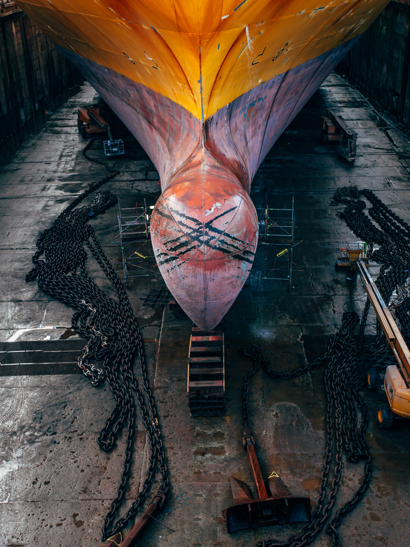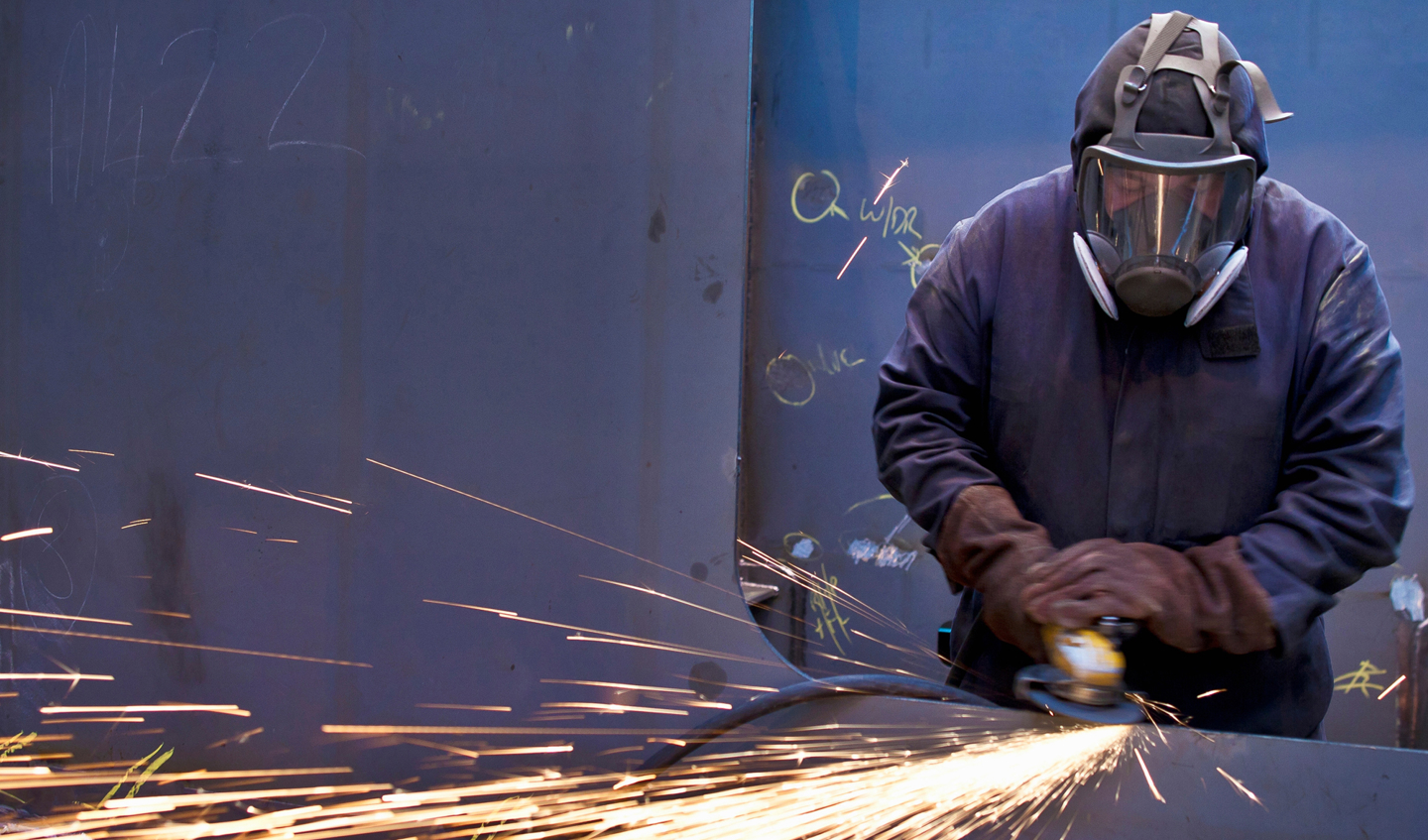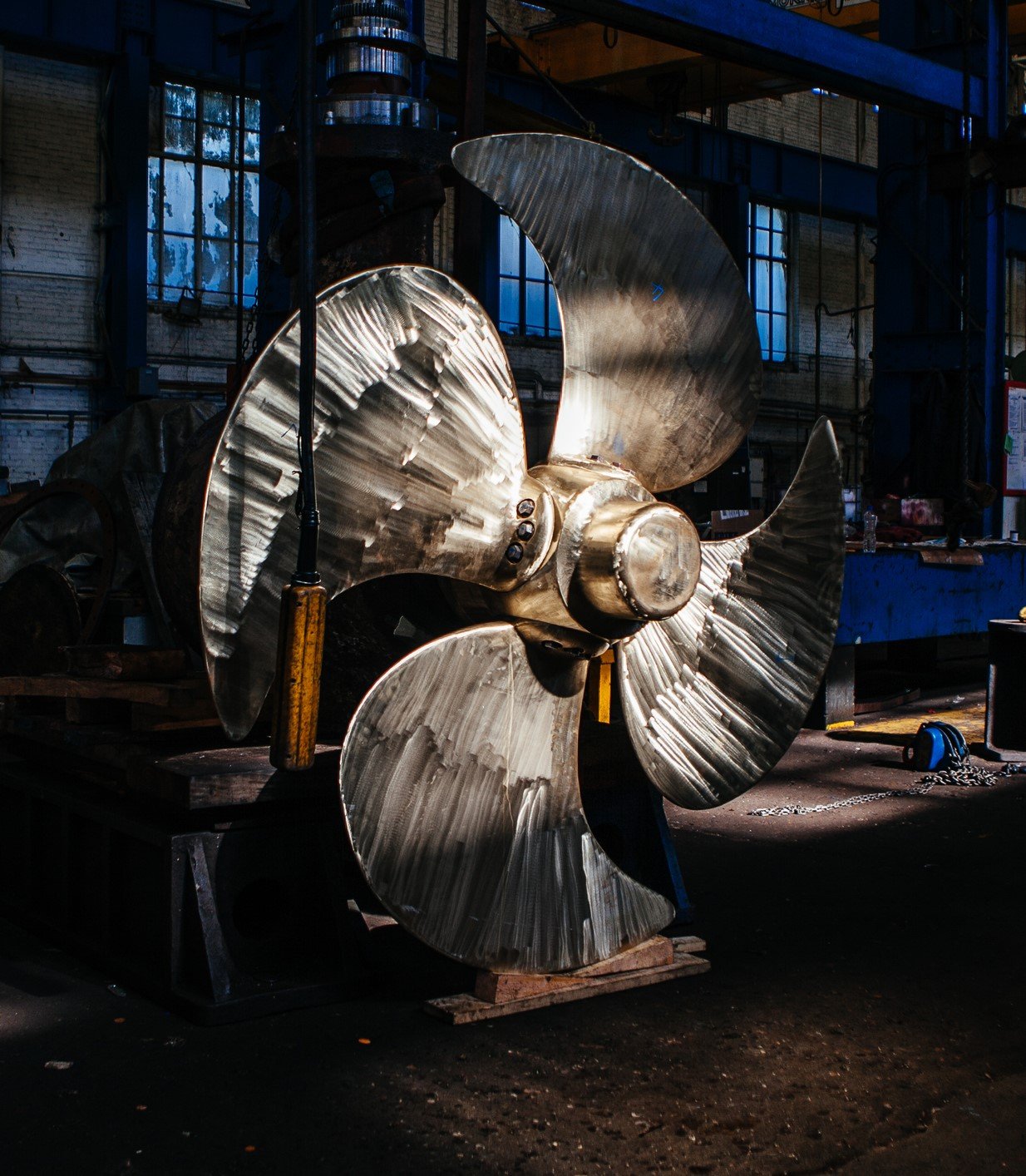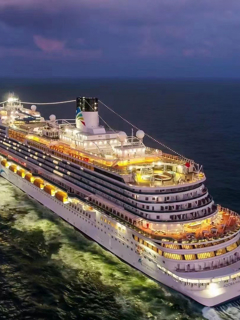Decarbonising shipping is about more than fuel. “The more we focus on fuels, the more non-fuel related greenhouse gas (GHG) emissions will become relevant,” believes Andreea Miu, head of Decarbonisation at the Sustainable Shipping Initiative (SSI).
She was speaking in September at the start of a seminar during London International Shipping Week to launch a new SSI report, Green steel and shipping, which explores the potential for ‘green’ steel to reduce a ship’s environmental impact over its complete lifecycle, from design to construction and eventual recycling.
This matters not only for shipping itself but also for the sector’s customers as they track their ‘Scope 3’ emissions, which arise along their value chain but over which they have no control. And with steel contributing around 75-80% of a ship’s weight, its creation and use form a significant source of shipping’s contribution to those emissions, Miu said.
SSI’s report states that the steel sector is responsible for 7-9% of global GHG emissions, which is more than twice shipping’s emissions from fuel, which contribute about 3%, according to the European Commission.
So a key driver in reducing those emissions is to make more use of recycled steel, or steel produced in ways that generate less GHGs, in ship production. Steel can be infinitely recycled and shipping is already a global supplier of high-quality scrap steel, SSI’s report states, which it says highlights the interconnectedness of the shipping and steel sectors.
In addition, most of the steel from a ship is recycled in some form and there was some discussion during the seminar over whether this could be done in a circular process, in which steel from scrapped ships is rerouted directly back into shipbuilding and repair. Geography presents a significant barrier to that model: most ships are built in China, Japan and South Korea but are scrapped in the Indian subcontinent.
SSI is in favour of circular recycling and has a working group tasked with looking at a ship’s lifecycle. One of its objectives is to promote a more circular ship lifecycle, Miu said, but Nicolò Aurisano, Sustainability and Lifecycle assessment specialist at AP Moller-Maersk (APM), disagreed. He told the gathering that transporting steel from India to South Korea, for example, would create unnecessary emissions compared with using the steel closer to the recycling facility. So closed-loop recycling is “practically unfeasible”, he said. Instead, shipping should learn from other sectors, such as automotive and construction, and tap into the global steel circular economy.
APM is in the forefront of support for green steel and joined the SteelZero initiative in 2020 (see What is ‘green’ steel?) and although its main environmental focus remains on fuels, as low-emission fuels become established, the proportion of emissions arising from shipbuilding and steel will increase.
So APM is starting to explore these emissions’ impacts on its environmental footprint and is committed to using 50% ‘lower embodied-emission steel’ by 2030 with a goal of using 100% net-zero steel by 2040. This transition has not yet started, Aurisano said, but it will put the ambition at the heart of future newbuilding contracts, which will specify, for example, a certain percentage of green steel in the vessel.
It will also have implications at the other end of its ships’ lives, but this will be more complicated, he indicated. “We have specific criteria on the yard wherever they end up” but “there is no transparency over what happens with steel once we sell the vessel.”

Green steel and Class
Classification can support the industry’s transition towards green steel, believes Amelia Hipwell, Lloyd’s Register’s Decarbonisation innovation manager, who works in LR’s Maritime Decarbonisation Hub, which is jointly funded by LR and its charitable arm, the LR Foundation.
She echoed Aurisano by saying that the industry is currently focussed on operational emissions but told the seminar that the hub’s mission “is to drive shipping’s safe and sustainable transition” and is looking at steel in that context.
It is also looking at how to assess green steel itself. First, it must be approved in the current way as being ship-grade material and must then be approved as being green. This is complex and is not currently being done, she said. It would require a review of the overall emissions during its production and she suggested that the Responsible Steel International Standard – which was launched in 2019 – could be a starting point for confirming that steel is green.
That standard was developed to recognise steel sites that are operated in a responsible manner and a version 2.0 was launched in September 2022 to incorporate requirements about GHG emissions and the sourcing of input materials.
LR will be offering what she called green steel descriptive notes that shipowners will be able to reference in yard contracts to define their green steel requirements, adding that these notes could provide evidence, for example to financiers and supply chain stakeholders, of the emissions reductions incorporated into the building process.
But Hipwell highlighted a broader question: How long will it take to offset the emissions embodied in a new build because of its better efficiency when compared with retrofitting an existing vessel to improve its efficiency? LR is looking at this topic “with great interest”, she said.
“LR will be offering green steel descriptive notes that shipowners will be able to reference in yard contracts to define their green steel requirements”
Traceability
Ultimately, the quality of steel containing recycled material “will depend on the scrap that’s used,” Hipwell said, but keeping track of specific scrap material will require it to be traceable, said Gudrun Janseens, BIMCO’s Brussels-based manager of Intergovernmental Relations.
She believes that the Hong Kong Convention (HKC) – which will come into force in June 2025 – will improve traceability, thanks in part to its requirement for ships to have an inventory of hazardous materials (IHM), which is already a feature of the EU’s Ship Recycling Regulation. But Janseens suggested that this approach could be extended to enable steel to be segregated into its different grades to make recycling easier, which she believes could be achieved by tabling amendments to the HKC at IMO.
She also proposed that the Basel Convention, which addresses transboundary movements of all hazardous wastes and their disposal, should follow suit so that all scrap steel could be segregated in the same way. Speaking later to Horizons, she included the EU’s Waste Shipment Regulation in that ambition, saying that both it and the Basel Convention need to be amended in the wake of HKC’s coming into force; “they need to speak the same language,” she said.
A similar desire for a cross-sectoral approach to green steel was reflected in remarks by Kate Kalinova, who covers the steel sector as a senior associate for the South Korea-based organisation Solutions for Our Climate (SFOC). She called for a show of hands from any steelmaking companies attending the event: none was raised.
Shipping’s level of interest is little better, she suggested – although Maersk regularly takes part in SFOC events, she noted – with shipbuilders and port authorities also notable by their absence in discussions about green steel. “We’re seeing a glaring gap here,” she said; “we need to see much more dialogue and discussion amongst these key stakeholders to move this discussion forward.”
Because of SFOC’s location, she has a front-row view of the Asian steel and shipbuilding industries, which are interdependent on one another, and anticipates a competitive market in steel scrap will emerge, of which there is a global shortage. This could be supported by expanding the ‘green corridor’ concept – which encourages non-fossil-fuel based low-emission (and ultimately, zero-emission) operations on specified routes – to take account of the materials that are being shipped. A corridor on that basis might be defined, for example, linking regions such as Australia, South Korea and Japan along which green iron shipments would be encouraged.
Other industries – especially automotive – are ahead of shipping, Kalinova told Horizons. Major car brands, such as Volvo and Mercedes Benz, are already making moves towards using green steel, but shipping is late to the game. There are reasons for this disparity, she suggested, not least because of the lack of coordination between shipping value chain stakeholders, including owners, builders, and their suppliers. But shipping’s decarbonisation is also happening at slower rates because of the quantity of assets companies currently have and the technologies to which they have access when it comes to procuring new vessels, both in terms of fuel capabilities and materials such as low carbon steel.
Steel manufacturers also face challenges, particularly in Asia she said. Many of the coal-powered blast furnaces are relatively new, which makes steelmakers more reluctant to adopt lower emissions technologies, while their customers – especially in Europe – want to see the steel sector moving faster towards decarbonisation.
93% CO2 savings now
Even with existing smelting technologies, emissions vary considerably, said Pia Meling, managing director of the ESG consultancy Grieg Green. In closing remarks to the conference, she said that Chinese foundries emit about four tonnes of CO2 per tonne of steel from their coke-fuelled blast furnaces, compared with a global average of two tonnes and as little as 0.3 tonnes from some European electric arc furnaces. So there is a potential of reducing emissions by 93% using existing technology “and nobody’s talking about that,” she said.
With fleet upgrades now likely to meet IMO and other exhaust emission standards, she believes that green steel should be a priority when making those plans, not least because she anticipates that capital providers and cargo owners will start asking about a ship’s lifecycle environmental footprint and not only about its emissions at sea.
Speaking to Horizons, she said that large roro and container ship operators are already thinking along these lines, but agreed that smaller operators may not see this is a priority, given all the environmental regulations they need to comply with. Nonetheless, she is optimistic that as what she called “the most-responsible shipowners” adopt policies based around green steel, “that might pull the others with them.”
But there has to be some commercial benefit to encourage this shift. “Either your bank or your or your insurance provider or your cargo customer could give better terms if you have reduced your CO2 in a lifecycle perspective,” she said. “I think this will come.”









